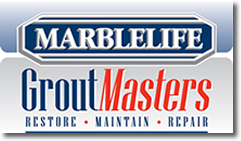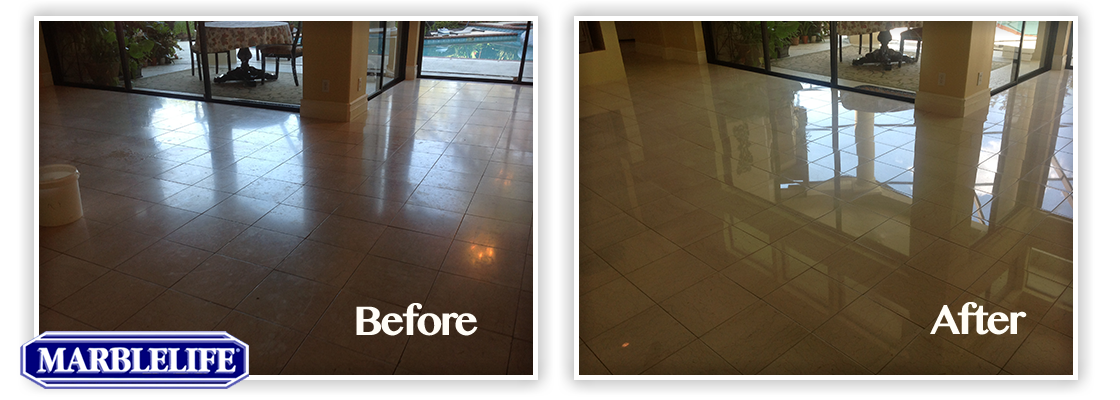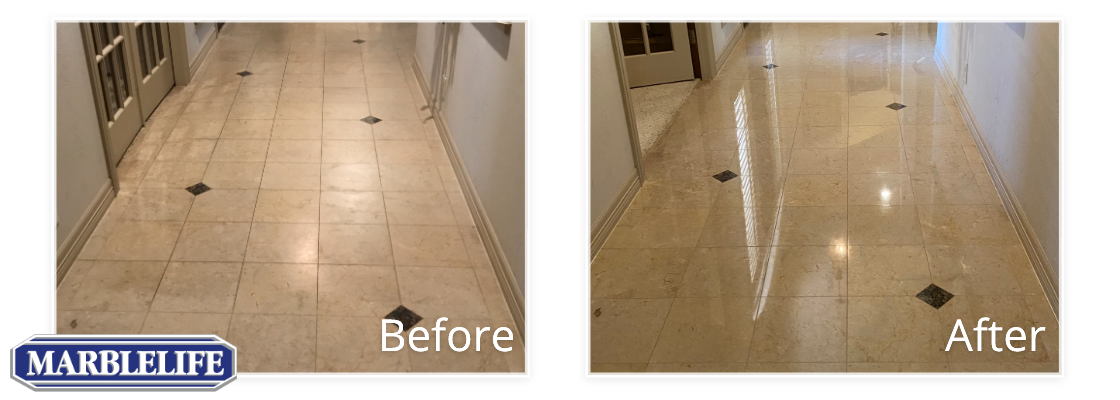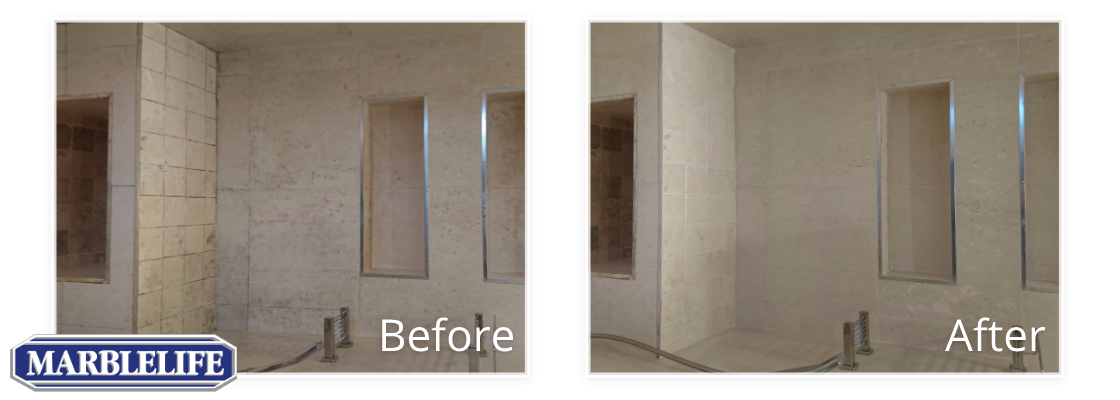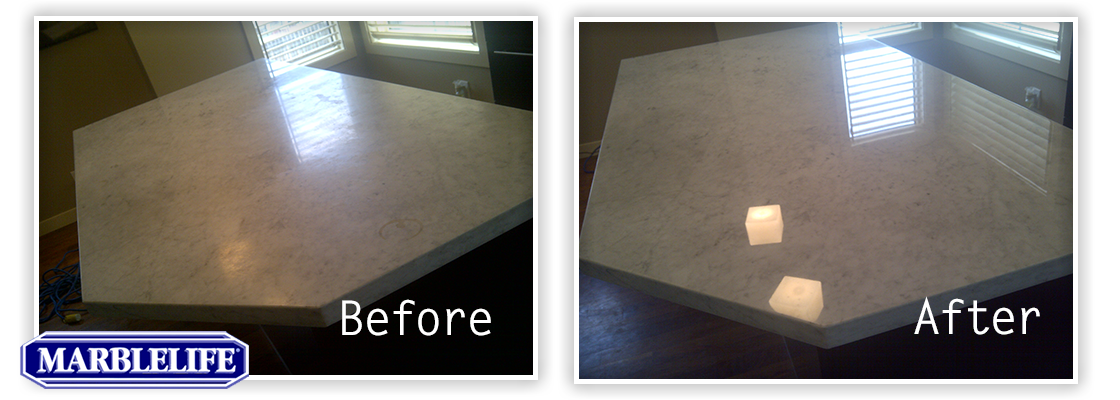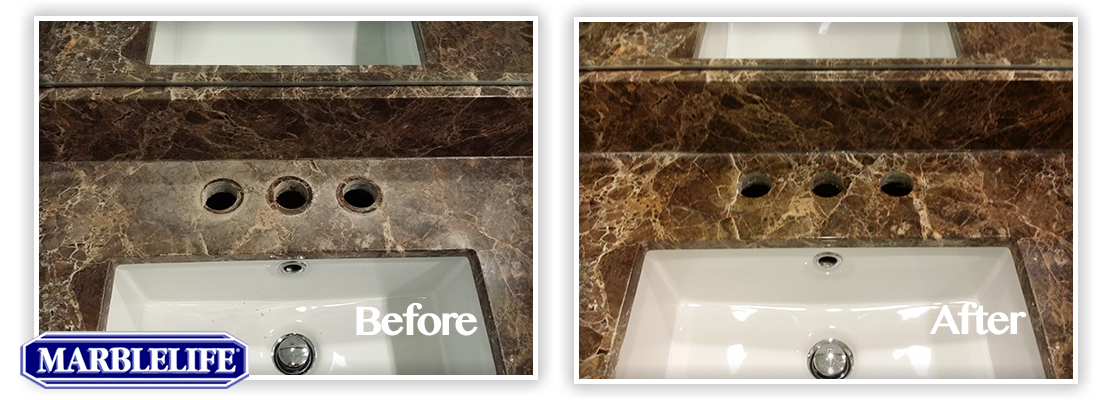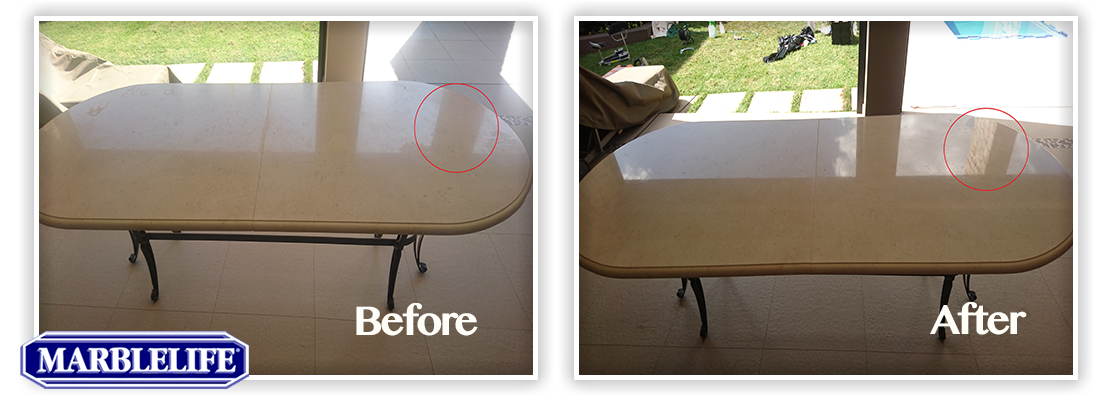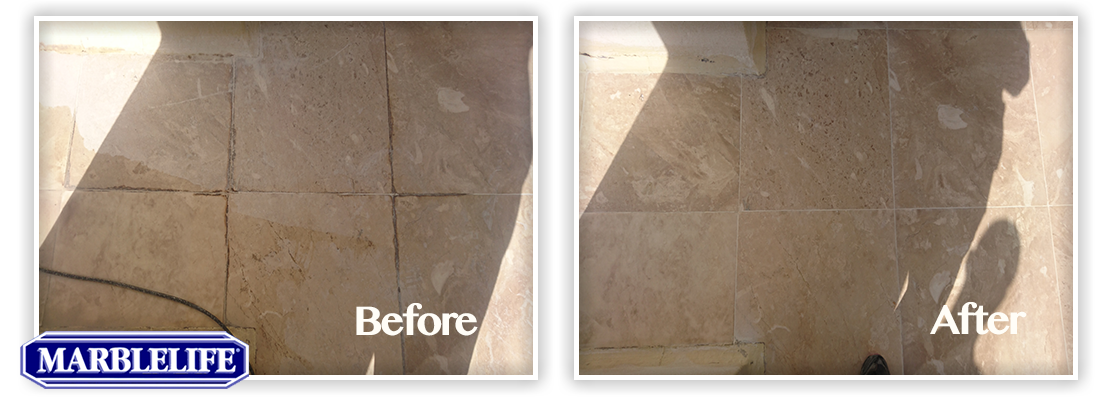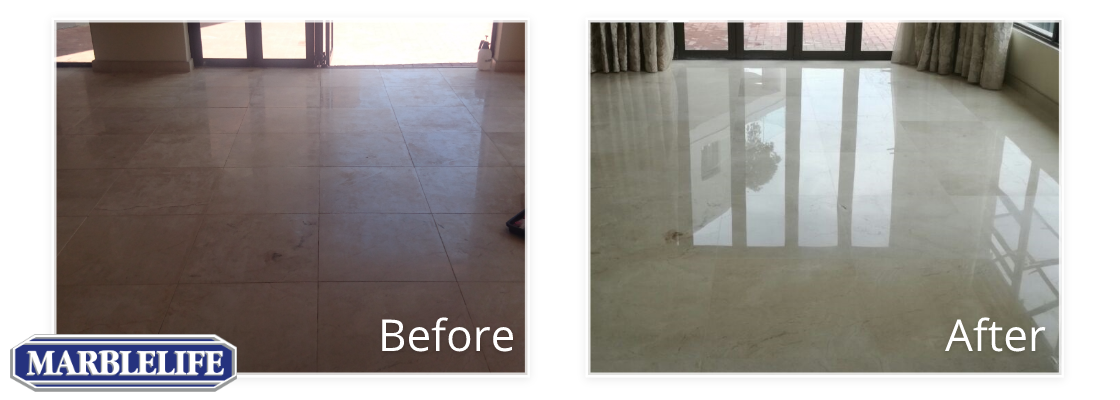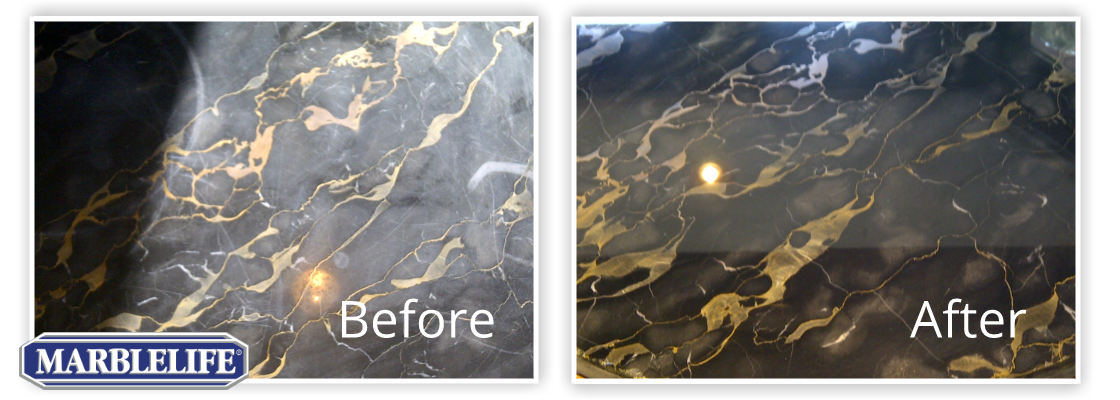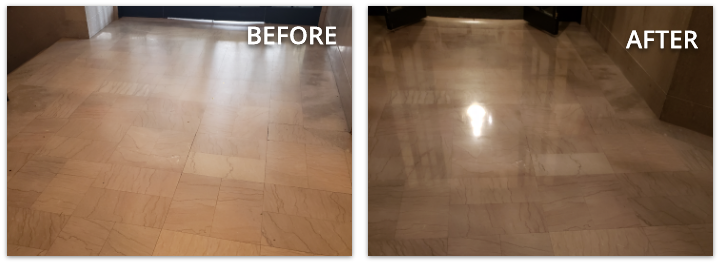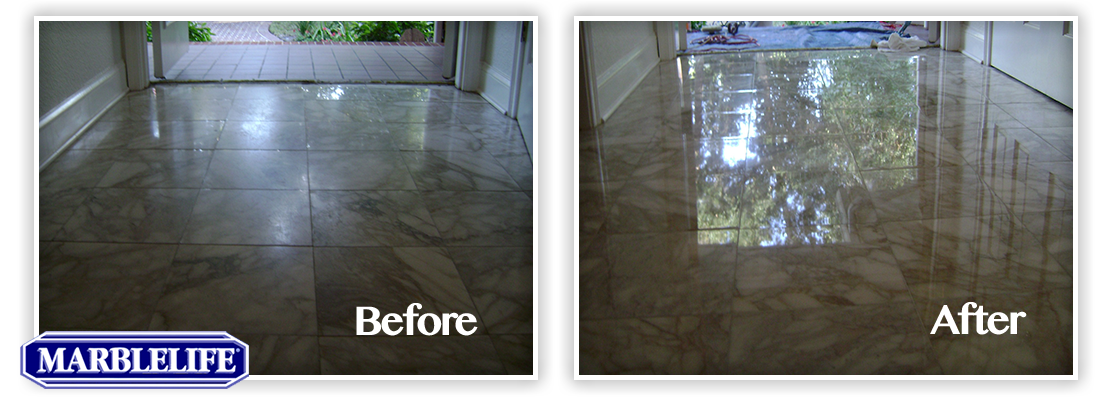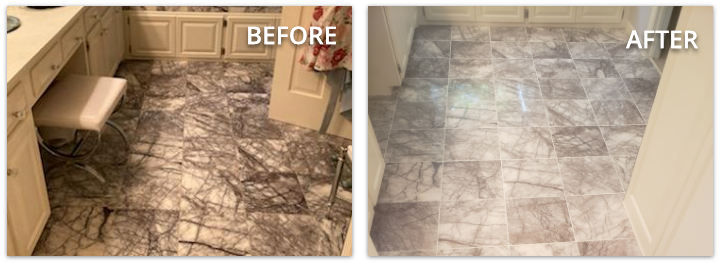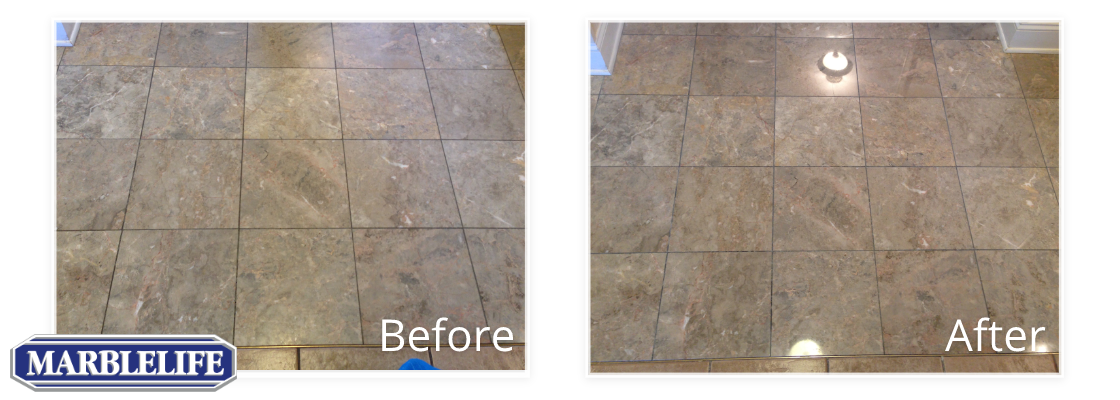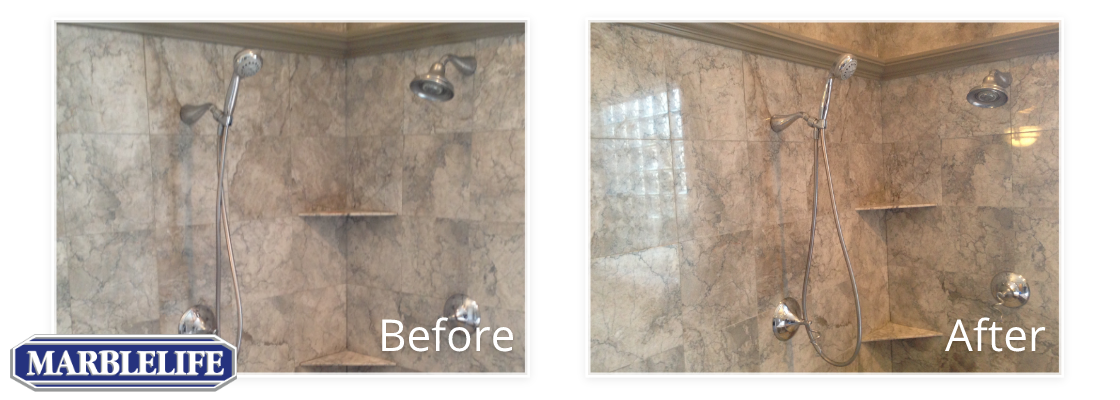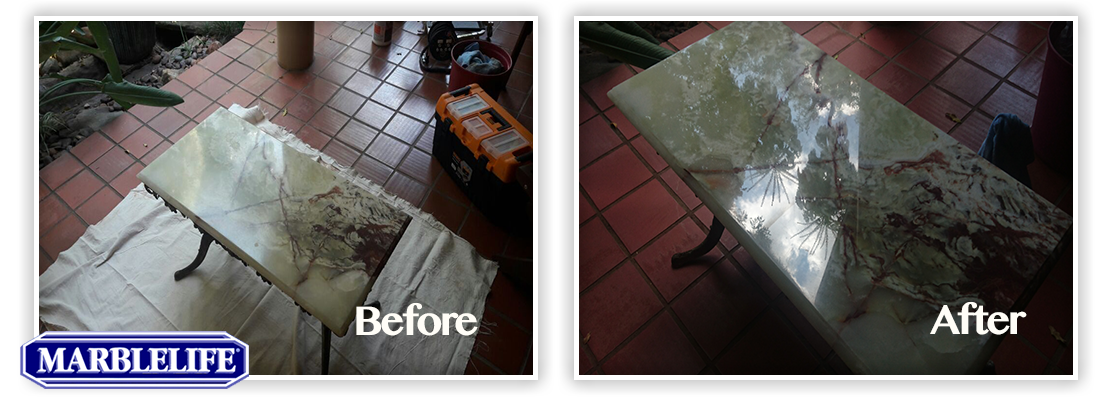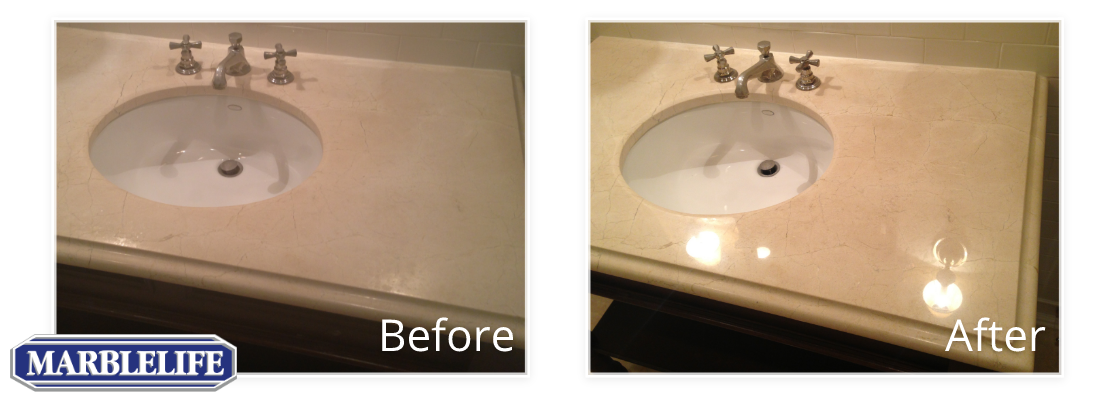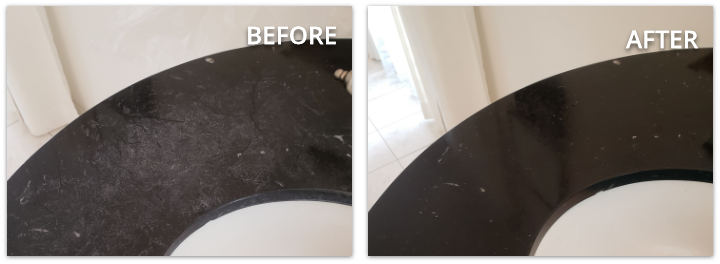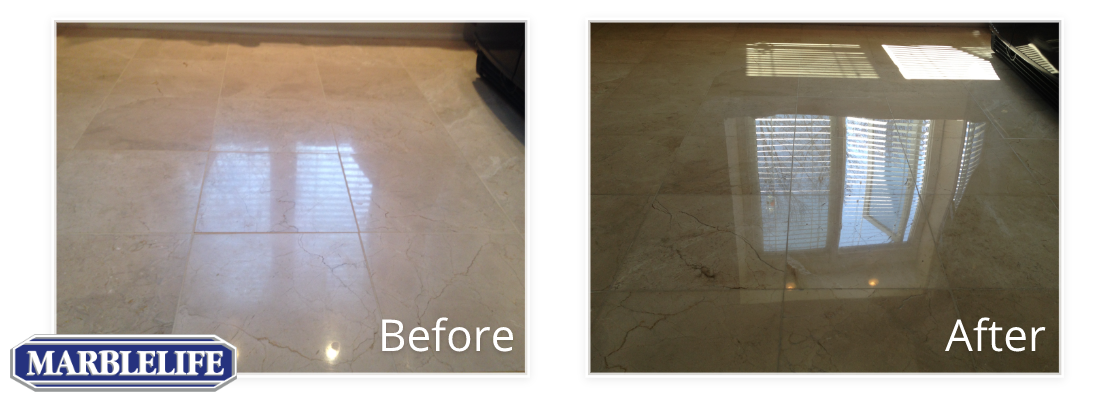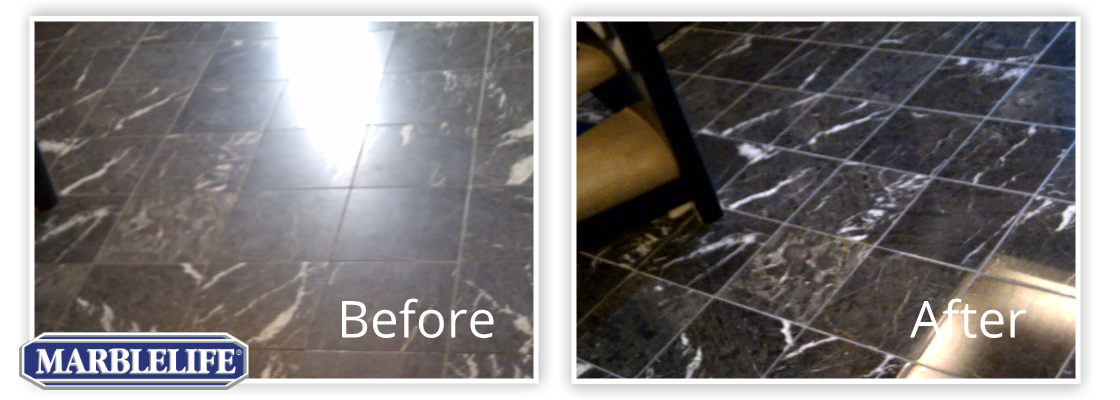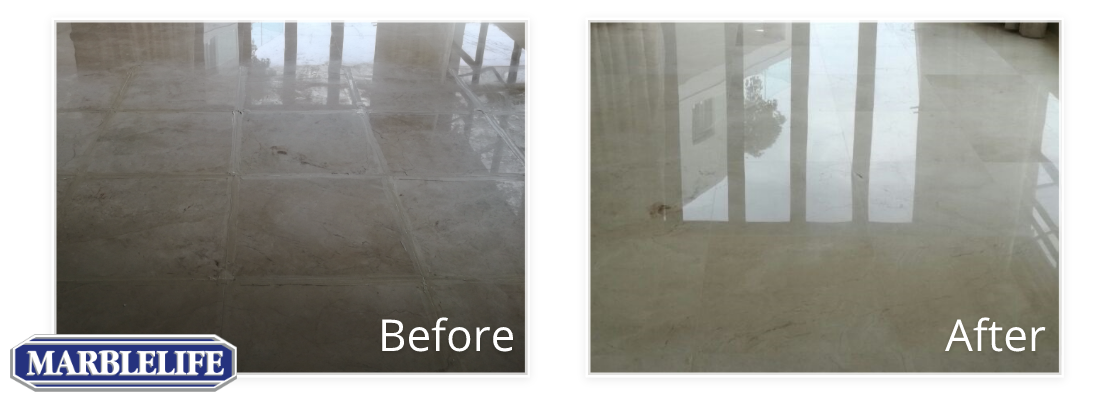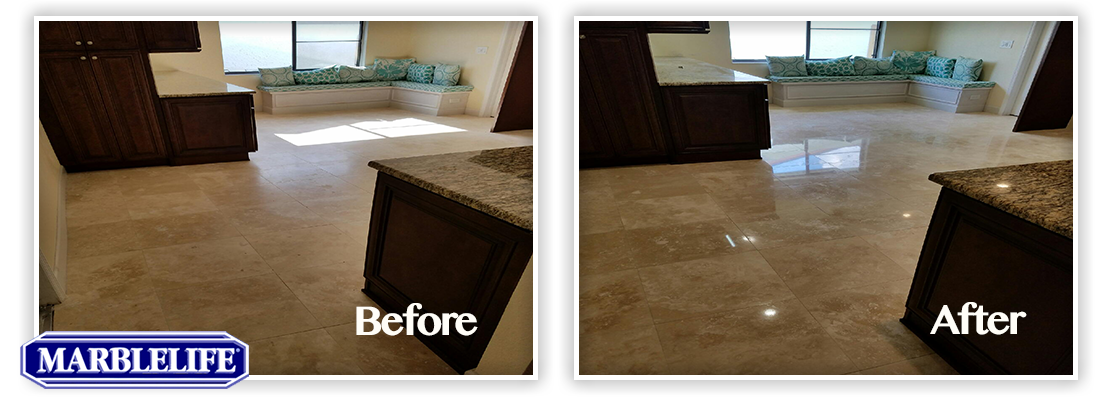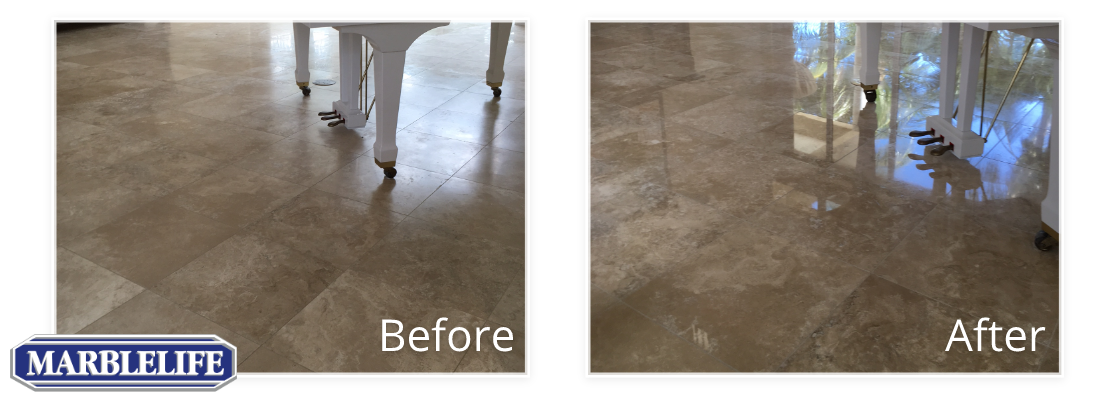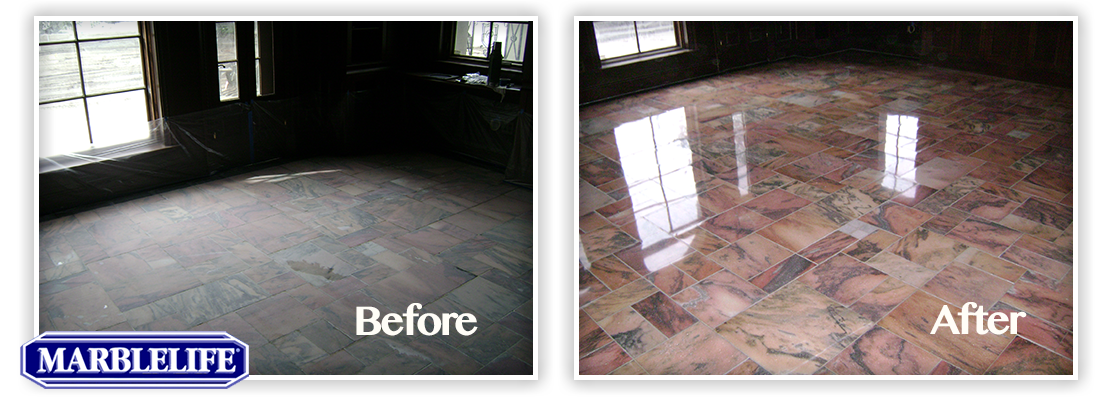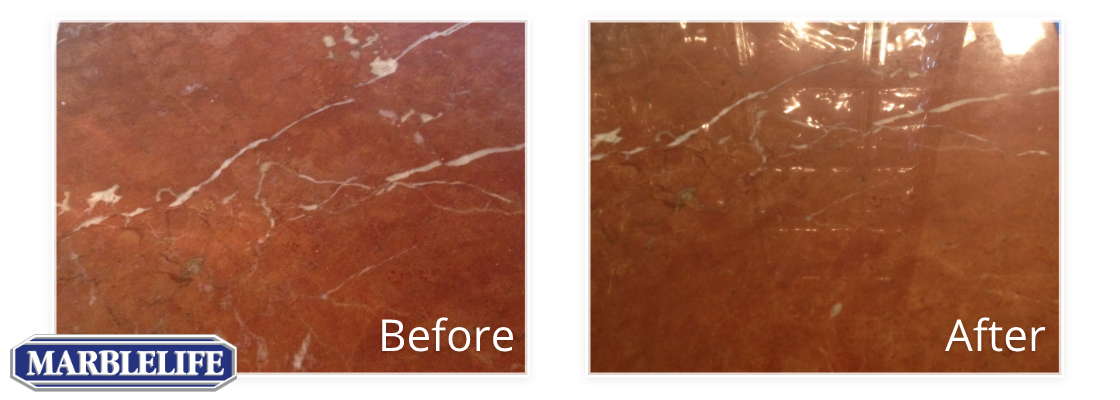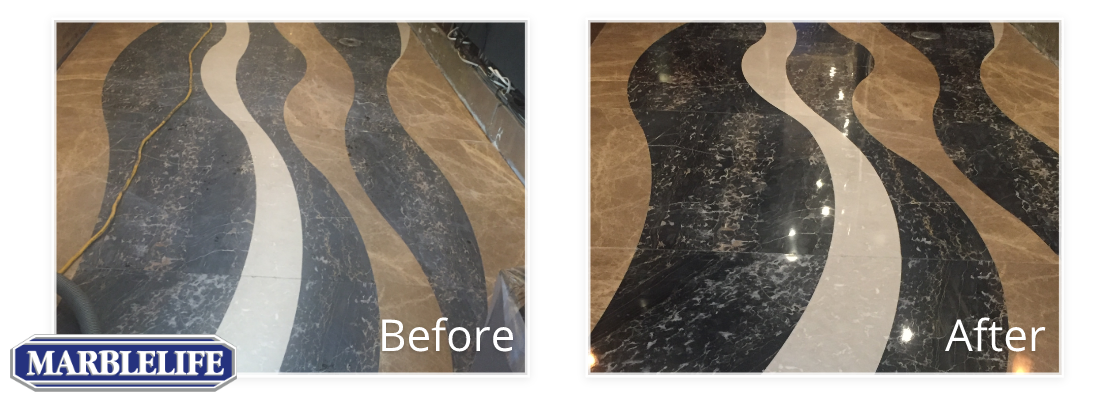When you hear a product attempt to accomplish two tasks, one has to ask how can you optimize both? Clean-and-Polish or even worse Clean-and-Seal.
Clean and Polish
There are 3 paths to accomplishing this task – oils, waxes or acids. None-are a good options. Polish in this case is misleading. To polish is to smooth the surface to the point that it is so smooth that light can bounce off it true creating a reflection. This is generally done the hard way, by rubbing the surface with ever smaller abrasives until smooth enough to allow light to bounce true.
Generally, this hard smooth surface will last for years until damaged by wear or chemicals, which means treated well they can last for years.
Oils and waxes seek to fill in the rough spots to achieve that same smooth surface. The difference is in their longevity and cleanliness. Stone will simply last longer than oil or wax. Oil and waxes evaporate and provide a sticky wet surface to capture dirt. They require replenishment which means you have to re-apply versus clean. A truly polished surface just needs to be cleaned and dusted to shine. The second issue is how does your product knows when its supposed to clean or polish? If you polish before it is clean, your oil or wax trap the dirt. Overtime you are collecting dirt resulting in a dulling finish, but now the dirt is buried in wax and oil meaning you have to clean off the oil and wax to remove the dirt, only problem is your product is not designed to remove that oil or wax, and is bringing more and covering more dirt. This is simply a bad idea because it cannot work longterm. Clean when you need to clean, and your polished surface will remain polished.
We can make this statement, because we take the calls, to come out and fix these problems. What’s the first thing we do? Remove the product, stop the damage, strip these chemicals from the surface so that the polished surface beneath can shine forth, and if damaged restore it to a cleanable polish.
Clean and Seal
Sounds great….but…how does the product know when it supposed to clean and when it should seal? It cannot, which means that as it is sealing it cannot help but seal in dirt and oil, and in doing so traps dirt permanently into the pores of the product. Ever get interrupted while cleaning? That would be a problem here. Sealers must be removed from the surface, the idea is that they get into the pores and excess is removed from the surface. If a sealer is allowed to dry on the surface you have a problem, that will disrupt the polished appearance of your surface, and worse requires a professional to remove. This is really not a good idea.
Clean and Seal should be just that clean first with an optimal cleaner capable of removing oils and dirt, and then once dried apply a penetrating sealer allowing it to soak in and then removing the excess. In so doing no dirt or oil is bonded to the surface.
MARBLELIFE has formulated its cleaners to clean without depositing oils or waxes, followed by MARBLELIFE sealers such as MARBLELIFE STONE SEALER and MARBLELIFE GROUT CLEANER to seal your surfaces quickly, cleanly and easily to maintain a stain-free surface.
A cleaner should clean. That’s it just clean. As soon as one attempts to balance and second function there are problems, as bala.
WHAT YOUR CLEANER IS TRYING TO DO TO MUCH? AND WHY IT SHOULDN’T. ”

